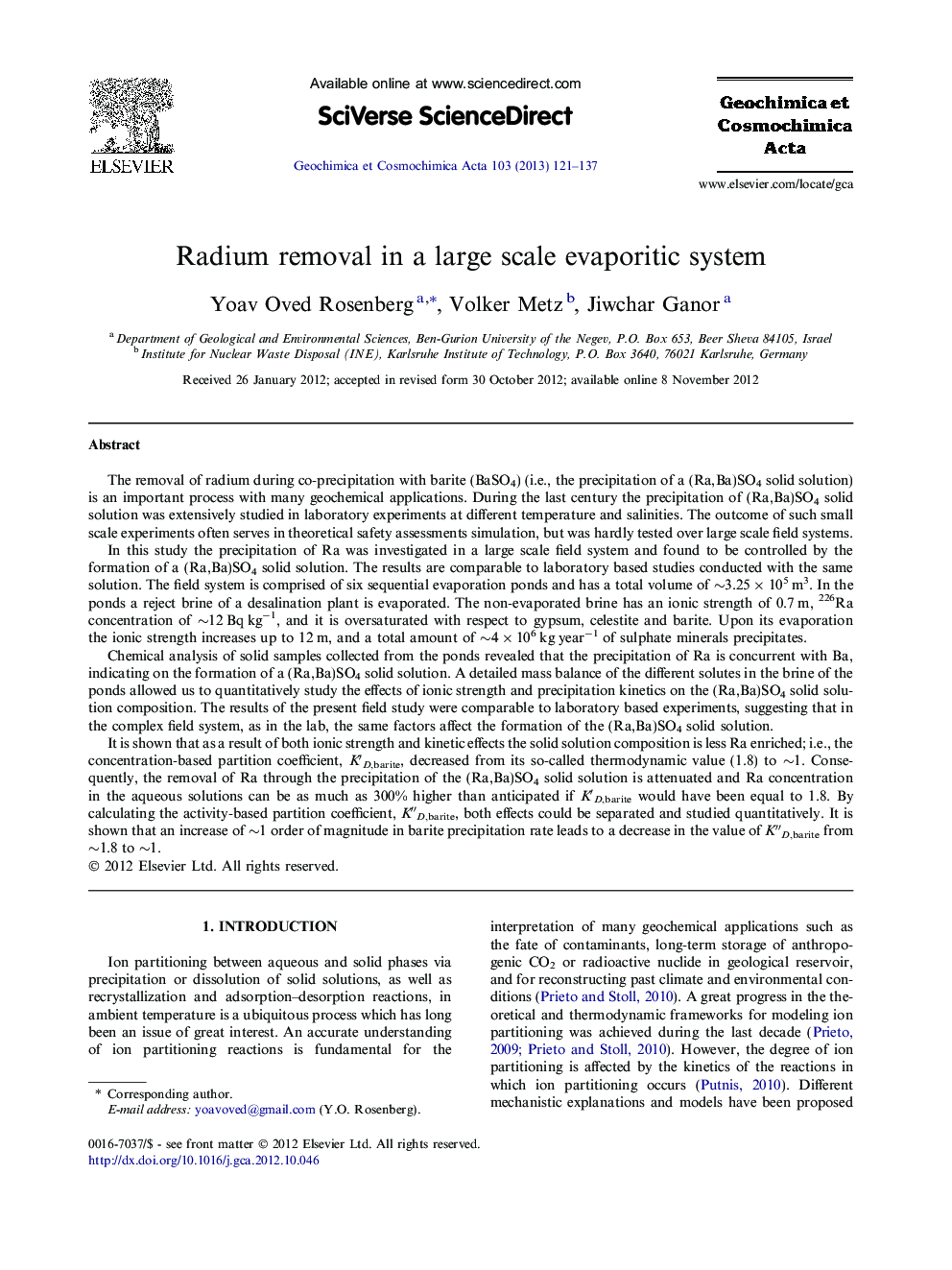| Article ID | Journal | Published Year | Pages | File Type |
|---|---|---|---|---|
| 4702505 | Geochimica et Cosmochimica Acta | 2013 | 17 Pages |
The removal of radium during co-precipitation with barite (BaSO4) (i.e., the precipitation of a (Ra,Ba)SO4 solid solution) is an important process with many geochemical applications. During the last century the precipitation of (Ra,Ba)SO4 solid solution was extensively studied in laboratory experiments at different temperature and salinities. The outcome of such small scale experiments often serves in theoretical safety assessments simulation, but was hardly tested over large scale field systems.In this study the precipitation of Ra was investigated in a large scale field system and found to be controlled by the formation of a (Ra,Ba)SO4 solid solution. The results are comparable to laboratory based studies conducted with the same solution. The field system is comprised of six sequential evaporation ponds and has a total volume of ∼3.25 × 105 m3. In the ponds a reject brine of a desalination plant is evaporated. The non-evaporated brine has an ionic strength of 0.7 m, 226Ra concentration of ∼12 Bq kg−1, and it is oversaturated with respect to gypsum, celestite and barite. Upon its evaporation the ionic strength increases up to 12 m, and a total amount of ∼4 × 106 kg year−1 of sulphate minerals precipitates.Chemical analysis of solid samples collected from the ponds revealed that the precipitation of Ra is concurrent with Ba, indicating on the formation of a (Ra,Ba)SO4 solid solution. A detailed mass balance of the different solutes in the brine of the ponds allowed us to quantitatively study the effects of ionic strength and precipitation kinetics on the (Ra,Ba)SO4 solid solution composition. The results of the present field study were comparable to laboratory based experiments, suggesting that in the complex field system, as in the lab, the same factors affect the formation of the (Ra,Ba)SO4 solid solution.It is shown that as a result of both ionic strength and kinetic effects the solid solution composition is less Ra enriched; i.e., the concentration-based partition coefficient, K′D,barite, decreased from its so-called thermodynamic value (1.8) to ∼1. Consequently, the removal of Ra through the precipitation of the (Ra,Ba)SO4 solid solution is attenuated and Ra concentration in the aqueous solutions can be as much as 300% higher than anticipated if K′D,barite would have been equal to 1.8. By calculating the activity-based partition coefficient, K″D,barite, both effects could be separated and studied quantitatively. It is shown that an increase of ∼1 order of magnitude in barite precipitation rate leads to a decrease in the value of K″D,barite from ∼1.8 to ∼1.
